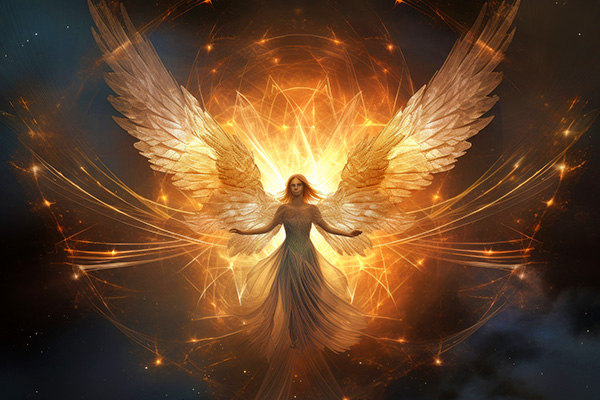Employing Psychomanteum Gazing as a Technique to Facilitate Contact with Spirits
 Numerous techniques exist for connecting with the spirit world, all ultimately achieving a similar goal. Among the mystical instruments employed to engage with the spirit dimension, the psychomanteum presents itself as a fascinating alternative.
Numerous techniques exist for connecting with the spirit world, all ultimately achieving a similar goal. Among the mystical instruments employed to engage with the spirit dimension, the psychomanteum presents itself as a fascinating alternative.
A psychomanteum, sometimes referred to as a mirror gazing chamber, is a compact and enclosed environment designed to enhance communication with the spiritual realm, featuring a mirror positioned to reflect solely darkness.
The practice involves peering into the dark mirror to encourage intense concentration, sensory deprivation, and a shift in consciousness.
This technique, known as scrying, originates from ancient Greek customs where analogous practices were utilized for divination, prophecy, and dialogues with the afterlife. Scrying entails gazing at a reflective surface to perceive psychic visions or gain foresight into future events whilst in a trance-like condition.
The renowned French seer, Nostradamus, used a water-filled scrying bowl in his prophetic endeavors. He would place a brass bowl on a tripod and focus on the water to receive psychic impressions for his predictions.
While traditional scryers might utilize crystal balls, bowls of water, or polished stones, the mirror in a psychomanteum delivers a uniquely immersive encounter. As the participant gazes into the reflective surface, the mirror functions as a cognitive gateway between different realms.
The label “psychomanteum” originates from the Greek term psyche, signifying “soul” or “mind”, and manteion, denoting “oracle” or “divination site.” It fundamentally translates to “oracle of souls” or “venue for soul communication.”
The yearning to once more see and be with a loved one who has passed away ranks among the most heartfelt and profound of human aspirations. This desire is sometimes fulfilled as visions or manifestations of the departed ~ Raymond A. Moody, Jr.
<pFor centuries, tools like the psychomanteum have been employed by those striving to transcend the physical world and connect with departed loved ones, spiritual guides, and celestial beings. The contemporary resurgence of psychomanteum scrying was sparked by Dr. Raymond Moody, a researcher of near-death experiences, who examined it in his publication Reunions: Visionary Encounters With Departed Loved Ones. He is widely recognized for his pioneering work on near-death occurrences and the mysteries surrounding death.
Moody discovered that engagements in the psychomanteum with deceased individuals had a significant restorative effect, aiding the grieving in processing loss and sorrow. He conducted studies with numerous individuals, chronicling their experiences and the healing advantages they described. Moody’s findings have fostered a richer comprehension of afterlife communication and its potential for emotional recovery.
Establishing Your Psychomanteum
A classical psychomanteum is a specifically constructed space designed to heighten the chances of spirit interactions via sensory deprivation. It essentially serves as a dedicated scrying room, with the mirror being the central element for visions and messages.
This area is usually a small, confined space adorned with dark, light-absorbing materials such as black fabric or wood. A simplified version can conveniently be set up in any quiet, dim location in your home, such as a spacious closet. If you opt for a room with windows, utilize blackout curtains to prevent light infiltration.
The focal point is a cozy chair placed before a large, angled mirror. Some guides also suggest employing a subtle red light, akin to that found in photographic darkrooms, to foster an environment suitable for trance induction.
You can discover comprehensive instructions for establishing a psychomanteum in numerous online resources. They provide detailed guidance on sculpting a psychomanteum experience, encompassing the setup of the area, lighting, and relaxation techniques. There are also online courses offering step-by-step blueprints for constructing a psychomanteum, including necessary materials and arrangement instructions. Additionally, informative videos are accessible, such as one featuring Dr. Raymond Moody himself, detailing how he constructed a psychomanteum in his residence.
Psycomanteum gazing shares similarities with the modern ganzfeld technique, employed in parapsychological studies to assess extrasensory perception (ESP) or telepathy. The term “ganzfeld” derives from the German word for “whole field,” indicating the technique’s aim of establishing a uniform sensory environment to invoke a mild sensory deprivation state.
In a ganzfeld trial, participants also sit comfortably in a dimly illuminated room, but instead of gazing into a mirror, they use halved ping-pong balls over their eyes to block visual elements and create a consistent field of view. The participant, dubbed the “receiver,” listens to “white noise” through headphones to eliminate all auditory distractions. A second participant, the “sender,” attempts to mentally convey images or information to the receiver from a different location.
Incredible as it may sound, for many centuries in ancient Greece, institutions referred to as psychomanteums, or oracles of the dead, existed where individuals journeyed to consult with the spirits of the departed ~ Raymond A. Moody, Jr.
The Mirror Gazing Procedure
The act of utilizing a psychomanteum is termed mirror gazing or catoptromancy. It entails focusing intently on a mirror to achieve an altered state of consciousness and promote spirit communication. The word catoptromancy derives from the Greek terms katoptron (mirror) and manteia (divination).
Preparation constitutes a critical component of a fruitful psychomanteum session. Prior to entering the trance phase, it is beneficial to formulate specific inquiries for the spirit realm. This focus offers direction and intention, steering the experience. However, remaining open and receptive to whatever transpires is equally vital.
When engaging with the psychomanteum, you comfortably sit in the chair and gaze into the mirror, letting your mind rest and drift into a light trance. Similar to other forms of scrying, successful outcomes with the psychomanteum hinge upon your ability to enter a calm, receptive mental state. The more at ease you are, the more susceptible you will be to subtle energies and messages from the spirit. Conversely, excessive effort or forcing the experience typically leads to disappointment and minimal achievements.
As you transition into an altered state of consciousness, the lines between the physical and spirit worlds become hazy, facilitating the perception of visions, auditory sounds, or alternative forms of spirit communication. Patience and determination are essential for achieving fruitful results with mirror gazing. Have faith in the process, release expectations, and allow spirit to communicate in its distinct manner and timing.
Confidence and belief in the process are crucial as well. Approaching the experience with apprehension or doubt can create mental barriers that impede communication. Allowing yourself to sink into the trance state and permitting the process to unfold organically often yields the most satisfactory results. Trust that all that occurs is for your greatest benefit, rooted in love and a desire for connection.
The mirror gazing technique known as the “psychomanteum” was crafted to facilitate reunion experiences with those who have passed, addressing the feelings surrounding loss ~ Alejandro Parra & Jorge Villanueva
Common Psychomanteum Experiences
One of the extraordinary features of psychomanteum work is the broad range of manifestations encountered in spirit communication. In Moody’s studies, participants reported vivid sensory experiences, such as bright light sightings, feeling a presence, or hearing reassuring voices. Many encountered and interacted with deceased family members or friends, often resulting in feelings of tranquillity and resolution. One in four participants encountered a spirit other than their intended contact.
In approximately 10% of encounters, spirit apparitions appeared to emerge from the mirror, occasionally imparting a sensation of physical interaction. Some participants described the experience as feeling like they had stepped into the mirror, crossing over into a different realm. About half of the participants engaged in dialogues with the apparitions, either vocally or through mental exchanges. Notably, in a quarter of cases, the spirit interaction occurred not during the actual session but within 24 hours afterward.
Nearly all of Moody’s participants regarded these afterlife reunions as authentic, confident that they experienced real connections rather than mere imaginations or fantasies. Much like near-death experiences (NDEs), these encounters with the departed significantly influenced the participants, often reshaping their perceptions of reality and life’s significance.
Spirit communication via the psychomanteum is self-contained, with a defined beginning and conclusion. It is vital to honor the natural progression of the session. If the experience seems complete, refrain from pushing for more. Spirits discern when it’s time to retreat, and future opportunities for further communication will always arise.
For this reason, maintaining a journal is highly recommended. Document every facet, from visual impressions and auditory sensations to physical feelings and emotional responses. Over time, patterns and insights may emerge that enhance your understanding of the spirit realm.
The psychomanteum provides a deep and transformative avenue for connecting with spirit. Its straightforwardness and effectiveness have rendered it a cherished tool for seekers of spiritual truth throughout history. By crafting a relaxed and focused atmosphere and approaching the experience with confidence and receptiveness, anyone can employ this technique to explore beyond the veil.
|
Elizabeth’s abilities trace back several generations. She discovered her own gifts at an early age, recognizing the distinction between herself and most others. Since then, she has refined and mastered numerous metaphysical practices offering hypnotherapy, Psychic Mediumship, Mysticism, and Hypno-Reiki to her clients in Maine, as well as in various locations across the US and in Canada, where she travels. An avid pet lover, they serve as her greatest teachers, often contributing to a reading alongside the Angels, Guides, and loved ones providing insights and resolutions for each client. Elizabeth is also an author with a wealth of spiritual wisdom to share and is currently in the process of writing a book. If you are seeking her unique Psychic Wisdom, aiming for peace and answers that align with your highest good, you can contact Elizabeth at Psychic Access. |
Utilizing Psychomanteum Gazing as a Technique to Foster Communication with Spirits
The yearning to communicate with spirits or connect with the beyond has permeated human culture for ages. Individuals have pursued numerous methods to create this link, and one such technique involves the utilization of a psychomanteum. A psychomanteum is a specifically designed environment that permits individuals to engage in focused meditation or gazing aimed at potentially reaching out to spirits.
What is a Psychomanteum?
The term “psychomanteum” was introduced by Dr. Raymond Moody, a distinguished psychologist and investigator in near-death experience studies. The term amalgamates the Greek words “psyche” (denoting soul or mind) and “manteia” (signifying divination or prophecy). A psychomanteum typically consists of a small, dimly lit space that contains a mirror or reflective surface, an ergonomic chair, and subdued lighting. The reflective surface is generally positioned at eye level, enabling the individual to gaze into it comfortably.
The Function and Process
The objective of a psychomanteum is to cultivate an atmosphere conducive to engaging with spirits or deceased loved ones. The procedure involves resting in the chair, relaxing, and focusing on the mirror or reflective surface. The subdued lighting encourages a meditative state, allowing the mind to become more receptive to subtle messages or impressions.
Psychomanteum gazing is not centered on actively seeking spirits or imposing communication; rather, it’s a practice of making oneself open to receiving messages or forming connections. The reflective surface serves as a focal point that helps in quieting the mind and facilitating deeper concentration.
Advantages and Experiences
Proponents of psychomanteum gazing assert that it can offer several advantages, including:
1. Closure and Healing: For those mourning the loss of a loved one, engaging with the psychomanteum can provide a pathway to closure and healing. Making contact with the spirit of a departed loved one can bring solace and a sense of tranquility.
2. Guidance and Insight: Some seek spirit communication to obtain guidance or insights relevant to their lives. They may wish to receive advice or answers to significant questions.
3. Spiritual Growth: Participating in psychomanteum gazing can be a transformative journey, leading to personal evolution and a broadened comprehension of the spiritual dimension.
Experiences that occur within the psychomanteum can differ greatly. Some report vivid visual experiences, while others may sense messages through thoughts, emotions, or physical sensations. It’s essential to approach these experiences with an open mindset and no preconceptions, allowing the process to happen organically.
Cautions and Ethical Considerations
While psychomanteum gazing can be a potent and potentially transformative practice, it must be approached with care and reverence. Here are several critical considerations:
1. Psychological Readiness: Individuals with past mental health challenges, such as psychosis or severe depression, should proceed with caution and consult a mental health expert prior to attempting psychomanteum gazing.
2. Emotional Stability: It’s vital to be emotionally prepared and stable for any potential outcomes or messages that might arise during the practice. Seek support from friends, family, or professionals when necessary.
3. Ethical Duty: In endeavoring to engage with spirits, it is imperative to approach the practice with respect and integrity. Avoid seeking spirits for amusement or trying to manipulate the process for selfish gain.
Conclusion
Psychomanteum gazing serves as a technique enabling individuals to potentially establish communication with spirits or departed loved ones. While it may lack scientific validation, numerous individuals report profound experiences and rewards from engaging in this practice. If you are inclined to explore the psychomanteum, approach it with a willing spirit, respect, and a readiness to embrace the unknown. Continue reading
















